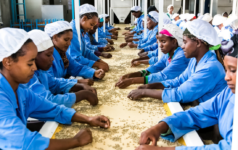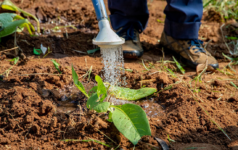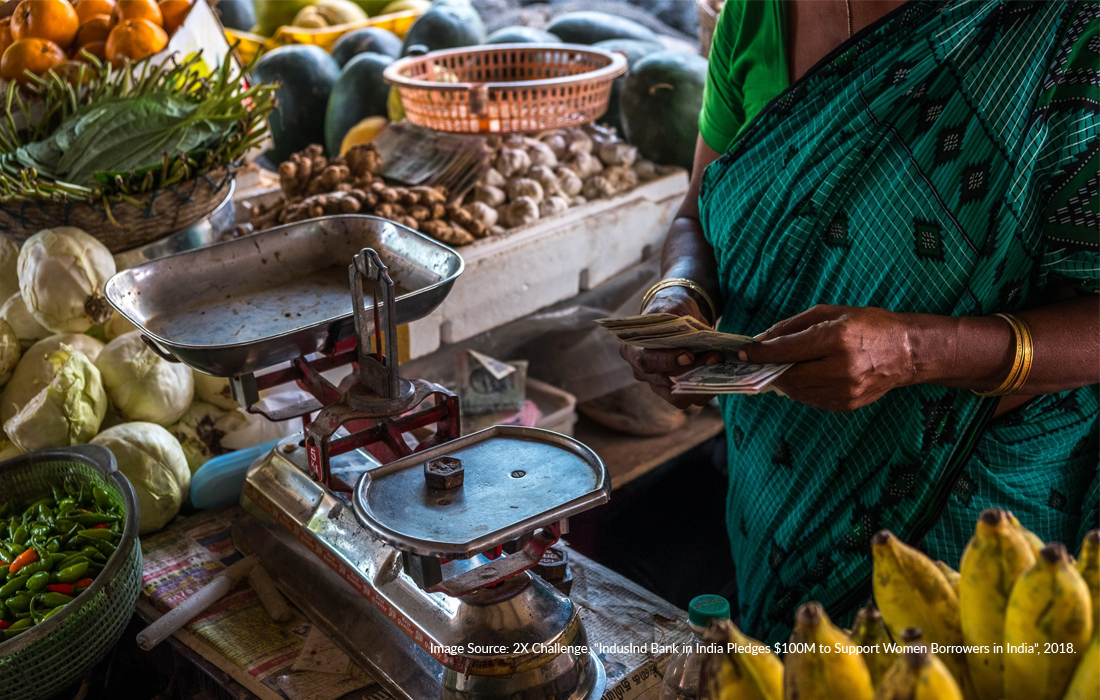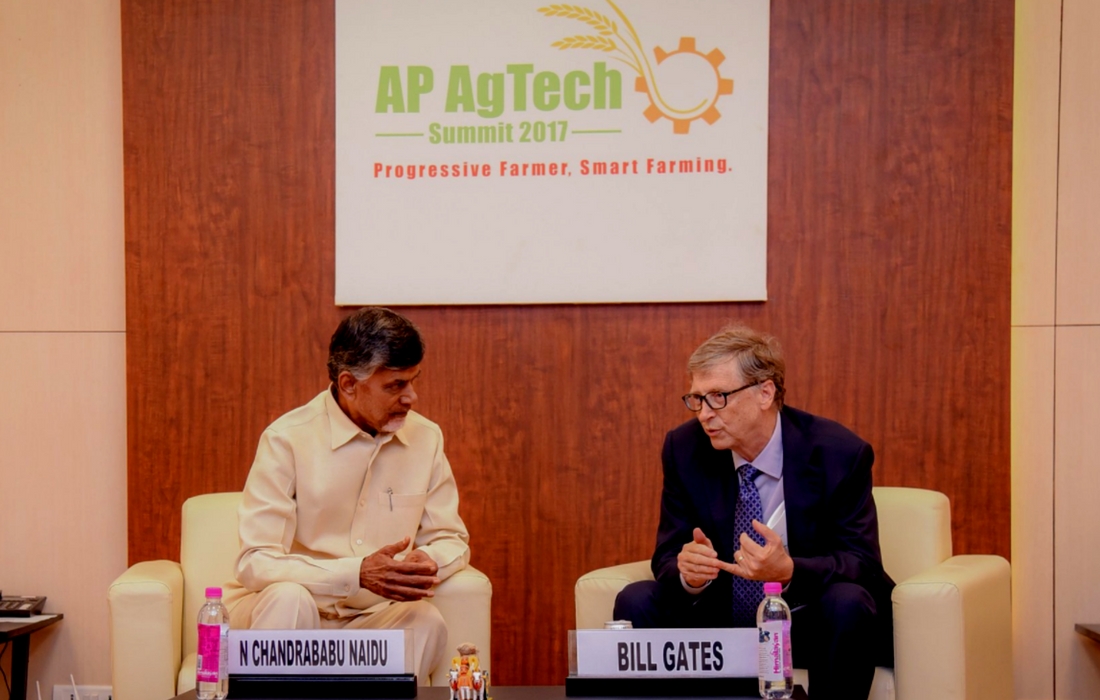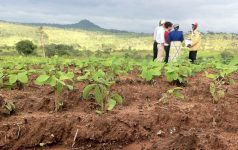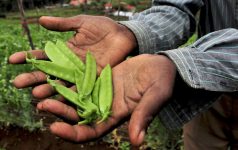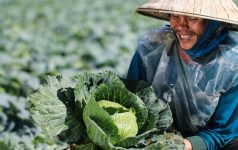Dalberg uses cookies and related technologies to improve the way the site functions. A cookie is a text file that is stored on your device. We use these text files for functionality such as to analyze our traffic or to personalize content. You can easily control how we use cookies on your device by adjusting the settings below, and you may also change those settings at any time by visiting our privacy policy page.
Food fortification can significantly improve nutrition and health. In India, access to fortified milk and Vitamin D fortified foods, for example, has transformative potential for the 70% of the population that was suffering from nutrient deficiency before the Covid-19 pandemic, a number that has only increased over the last year.
Food fortification is a scientifically proven, cost effective, and highly scalable process that lowers the high burden of micronutrient malnourishment. India is home to one in three of the world’s malnourished children and has the second highest level of wasting among children globally. Women in India also have the highest prevalence of anemia globally. These high levels of malnourishment are due in part to poor food quality that lacks important micronutrients such as iron, zinc, vitamins, and folate that are necessary for growth and development.
Over 70% of the Indian population consumes less than half the daily recommended dietary allowance of micronutrients a day. These deficiencies affect all population groups in India – urban, rural, rich, poor, old, and young – but women and children are significantly more affected. For instance, although 80% of the overall population has a Vitamin D deficiency, malnutrition stands at 93% for children and 91% for women.[1]
Furthermore, as Covid-19 continues to disrupt livelihoods as well as food and health supply chains, the nutritional status of millions of people is likely to worsen as both the availability of food and the ability to pay for it become more sporadic.
Large scale food fortification: An effective solution to malnutrition
Large scale food fortification (LSFF) is a powerful way to tackle micronutrient deficiency, a process in which micronutrients are added to food chemically, biologically, or physically. It began in the 1920s with salt iodization in Switzerland, and since then the prevalence of fortified foods has increased significantly. In 2019, for example, 137 countries mandated fortification of at least one food, while 68 mandated fortifying two foods.[2] Most food fortification efforts involve adding a few vital micronutrients such as Vitamins A and B, iron, iodine, and zinc to base foods.
Through a collaboration with the nutrition team at a global foundation in 2019, Dalberg researched and analyzed the evolution of LSFF in India. The report examined value chains, identified barriers to scaling, and proposed solutions to make fortified foods such as staples fortified with Vitamin D widely produced, distributed, and consumed.
A slow start for LSFF in India – and five years where momentum has built
In India, food fortification began in the 1950s with vegetable oil fortification and salt iodization. In the 2000s, the government introduced fortification of other commodities such as rice and wheat after a 60-year gap between global evidence.[3]
The momentum accelerated in 2016 when the country’s food regulator—Food Safety and Standards Authority of India (FSSAI)—established standards for fortification of rice, wheat flour, edible oil, double fortified salt (DFS), and milk.[4] It also established the Food Fortification Resource Centre which developed the ‘+F’ logo and helped build capacity for food producers. The Centre also issued new mandates to use fortified staples in safety net programs, such as double fortified salt (DFS) and fortified edible oil through mid-day meal (MDM) and Integrated Child Development Schemes (ICDS).[5]
Despite the potential, food fortification in India has still not reached most markets
Even though fortification is a relatively simple and low-cost process for most staples, Dalberg estimates that less than 20% of Business-to-Consumer (B2C) production[6] of edible oil, salt, and milk, about 3% of wheat flour, and 0.1-0.2% of rice is being fortified, or double fortified in the case of salt. Estimates also indicate that 40-60% of fortified food production is either not reaching or is not being consumed by the most vulnerable population groups, namely low-income women and children.
One reason for the low levels of production of fortified rice and wheat flour could be that the pilots and mandates for oil and salt occurred much earlier for oil and salt but more recently for rice and wheat flour. Among the reasons for low uptake by vulnerable populations are offtake of fortified foods by only a few states (despite mandates), leakages in public supply chains, and limited penetration of private distribution channels in rural areas.[7] Covid-19 has exacerbated these problems due to disruptions in food supply chains and last-mile delivery as well as school shut-downs.
The deeper issues impacting uptake of food fortification
Several systemic factors underlie limited production, leakages across the value chain, and low consumption by the most vulnerable. These factors cut across policy and governance reasons, industry structure, financial constraints, and social and cultural practices.
First, the political momentum on nutrition at the Central Government level is not uniformly translating into consistent State-level actions given the limited powers to ensure compliance as well as weak coordination between departments. There are also few policy incentives for the private sector to fortify foods. The tracking of fortified food through the Public Distribution System (PDS) needs improvement.
Industry structure is another challenge. While the oil and salt industries are relatively consolidated with large players accounting for 40-90% of production, the rice, wheat flour, and milk industries are characterized by a vast number of small-scale informal producers. This makes dissemination, coordination, and capacity building very challenging since food fortification requires investment in machinery and processes on the one hand and tracking and reporting on the other.
The financing of machinery necessary for food fortification is also a challenge. The capital costs of blending machinery, for example often make it unaffordable for small millers. A dosing system for rice costs INR 5-15 lakhs (US $6.8K-$20.4K) and a blender for wheat flour costs up to INR 1.3 lakhs (US $17.6K). Those interested in purchasing are often unable to access affordable finance, and the business case is not clear for these producers.
For end consumers, the affordability of fortified foods is not a significant barrier as fortification only adds 3-7% to the retail price. But while cost is not a primary barrier, awareness levels tend to be low. There are also challenges with cultural habits and “food aesthetics” that reduce consumption. For example, double fortified salt can lead to discoloration which results in lower consumer demand.
How to drive more impact: Urgent action required from important players
Nutrition in India has received a lot of attention in recent years. There is an opportunity for the government, development actors, and the private sector to act decisively and concertedly to address these challenges and scale up fortified food in India.
Based on our analysis of the food fortification landscape in India and lessons from across the world, Dalberg offers four ideas for better food fortification in India:
- Building capacity within the public sector, improving Centre-State coordination, and nudging a “race to the top”: Given the multi-dimensional nature of successful food fortification business models, a toolkit or a “playbook” would help Indian states, enabling them to implement best-in-class procurement and distribution models, and to manage economics and quality control. In parallel, a data platform to track state-level progress must be created and complemented with the National Nutrition Index created by bodies such as the NITI Aayog that induces healthy competition amongst states, as seen in the WASH, Health, and Education sectors.
- Catalyzing technological innovation focused on food fortification automation and quality assurance: Innovations can make machinery more affordable for small producers, reduce leakage, and improve accountability, among other use cases. In this context, a “Sandbox” to spur hardware innovations that make fortified food production “default” (e.g., by using electric dosifiers with built-in sensors for pulses and legume millers), and innovations that improve traceability across the supply chain (e.g., using blockchain) can be game-changing. Also, innovations in food packaging can mitigate the adulteration of fortified food.
- Well-coordinated social marketing for fortified food: LSFF is not only a supply-side issue – demand must be encouraged, and there is an opportunity to do so by end-consumers as well as intermediaries. Ecosystem actors can adopt “nudges” and popularize the ‘+F’ logo to create consumer pull for fortified food. In rural areas, community platforms such as Self-Help Groups can generate awareness and cook meals using fortified staples. For urban segments, the government can mandate using food fortified with vitamin D through food processors, food and beverage chains, while encouraging workplaces to serve fortified foods in their canteens and influence large retailers to promote them.
- Adopting innovative finance solutions to crowd-in resources for LSFF: There is a need for capital to scale food fortification, especially as governments become more cash-constrained due to the Covid-19 pandemic. Pay-for-performance instruments such as impact bonds, or de-risking instruments, like first-loss guarantees, can help increase access to capital for the private and non-profit sectors working on food fortification. Such financial solutions have been successful in industries such as education. The Government and development finance institutions can partner to implement such financing pegged to tangible improvements in micronutrient deficiency, particularly in high-prevalence states.
With Covid-19, the time for action is now
Micronutrient deficiency is a pervasive and persistent problem in India, and food fortification is a powerful means of addressing it. Given that Covid-19 has worsened nutrition outcomes across India, LSFF is even more important to ensure health and resilience among at-risk populations.
Before March 2020, when Covid-19 became a significant challenge for India, there had been structured efforts to improve nutrition overall: increasing political buy-in, FSSAI’s leadership, uptake by prominent private sector producers, mandates for distribution through social safety net programs, and increasing coordination among development actors. For the sake of India’s most vulnerable, it is important that this momentum be accelerated through multi-stakeholder action at scale.
Frequently Asked Questions (FAQ)
How widespread is malnutrition in India?
Over 70% of India’s population consumes less than the recommended daily amount of micronutrients. Women and children make up nearly 90% of India’s malnourished population.
What are the biggest challenges to food fortification in India?
There are several challenges to food fortification in India. Notable one are:
- Political momentum at the Central Government level not translating into uniform State action
- Lack of policy incentives for the private sector to fortify foods
- The small scale and informal nature of producers in the rice, wheat flour, and milk value chains makes dissemination, coordination, capacity building, and tracking challenging
- High capital costs of blending machinery, coupled with lack of access to affordable finance
- Low awareness levels amongst end-consumers
What has the Government of India done to improve nutrition since the start of the Covid-19 pandemic?
The Government of India has taken several steps to protect the population against malnutrition during the pandemic. The MoHFW issued detailed guidance recognizing that the reproductive, maternal, newborn, child and adolescent health, and nutrition services were amongst the most crucial health interventions and worked to ensure continued delivery of these services during the crisis.
Several state governments also issued operational guidance for the delivery of lifesaving nutrition interventions including the distribution of food, micronutrient supplementation, continued breastfeeding, and treatment of malnourished children in the context of Covid-19.
Source: https://in.one.un.org/nutrition-in-the-context-of-the-covid-19-pandemic-in-india
[1]NFHS-4 survey, FFRC website
[2]Global Fortification Data Exchange (https://fortificationdata.org/)
[3]Mandatory rice fortification legislation first introduced in 1952 in the Philippines, and for wheat flour in 1942 in the United States
[4]https://fssai.gov.in/cms/food-safety-and-standards-regulations.php
[5]FFRC Brochure, (https://fssai.gov.in/brochure.html)
[6]Production meant for retail consumption, not industrial purposes (e.g., food processing)
[7]Methodology: i) Availability assumed as quantum of commodity available for domestic consumption (domestic production + imports – exports); ii) Fortified production is quantum of fortified version; iii) Distribution calculated as offtake of fortified commodities by public channels (PDS, MDM, & ICDS) basis no. of states/ districts carrying fortified commodity, & by open market (losses in distribution, due to pilferage, spoilage, & diversion from public to private channels assumed); iv) Consumption estimated basis amount available for consumption by TG (rural, low income) assuming full supply from govt. channels goes to TG & open market supply split across TG & Non-TG based on availability, affordability, etc. Source: RBI, PDS Procurement, Off Take & Stocks (Sep 17) Large Scale Food Fortification (Oct 17), Expert interviews, Dalberg Analysis

